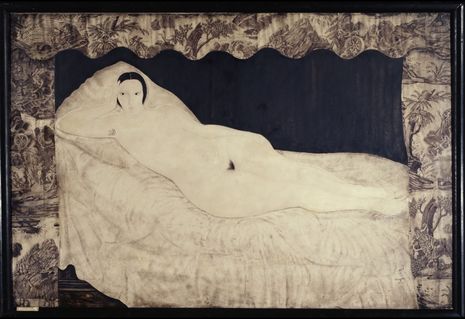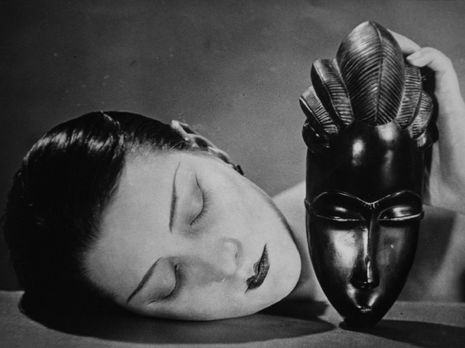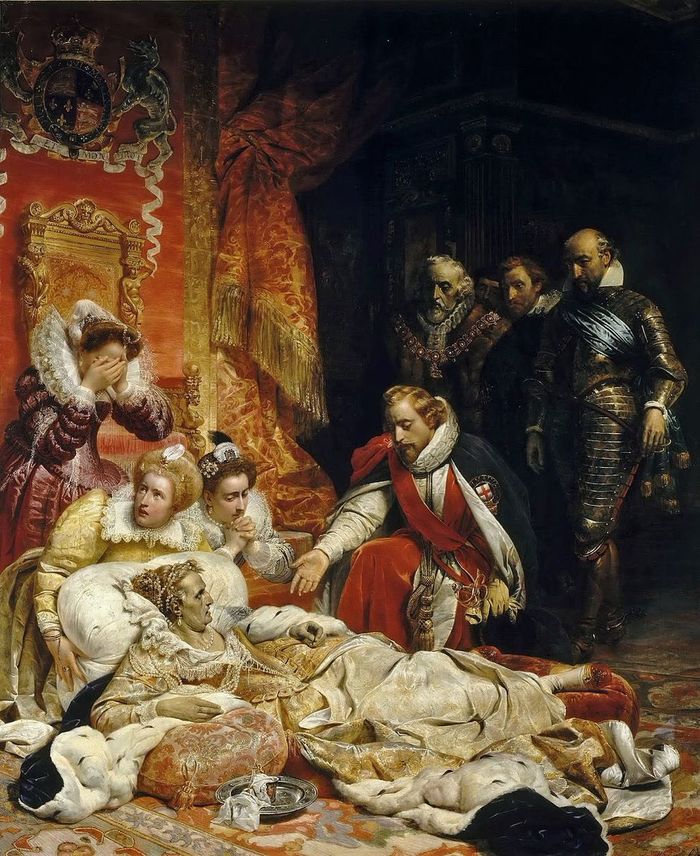Kiki, Foujita, and Reclining Nude
Audrey Lee explores the intoxicating rendering of Kiki de Montparnasse in Foujita’s Nu Couché à la toile de Jouy and the pervasion of her shadowy body today

When considering the muse in art, Kiki de Montparnasse comes to mind at once – if not immediately by name, then as the subconscious representative of beauty and society in early 20th century artistic modernism, her image being ubiquitous within the oeuvres of so many celebrated artists of the time. Having been the lover of Man Ray, the subject of his seminal 1926 photographic works Black and White and Ingre’s Violon, the likeness after which Pablo Gargallo’s 1928 ormolu bust was cast, and the sitter in some of Moise Kisling’s most recognisable portraits, Kiki’s influence on the trajectory of creative life in 1920s Paris is tacit and familiar. Less examined, however, is her enduring representation in the work of French-Japanese painter Tsuguharu Foujita, whose portraits of Kiki are situated at a unique cross-cultural juncture of painterly style and gaze.
“now more than ever, I find comfort in interrogating the suspended space between sitter and artist”
Revisiting Nu couché à la toile de Jouy (1922), I am struck by Foujita’s transferal of traditional Japanese ink painting techniques onto the classical subject of the reclined nude. Its composition speaks to a history of European boudoir painting – Trutat’s Reclining Bacchante, Titian’s Venus of Ubrino, Manet’s Olympia. This aesthetic conversation results in various formal sensitivities, but interestingly also the ability to capture a beauty that I now find myself reading as androgynous, ageless, and ambiguous.

Formally, Kiki’s pale body almost disappears into the fabric of the work: features of her pearlescent torso slip into the liquid-like bedcovers, physical contours are only discerned by a small tuft of black hair, and outer curvatures are outlined only by a shadow the width of an incision. How does inspecting the image of one model over time stir considerations about self-image now, where an abundance of perception has gained a new remoteness? There is a weighted distance that feels eternally captured in Nu couché, and, now more than ever, I find comfort in interrogating the suspended space between sitter and artist, the implied air between operative hand and documented body. I wonder what I see of myself there; pallid, idle, in undeservedly romanticised solitude, in Kiki’s likeness. Foujita noted the oriental features that made her a compelling subject, complicating gaze and objectification as presumed through the lens of a western canon. Formative to my understanding of ‘seeing’ in art was the doctrine John Berger outlines in Ways of Seeing: “Men act and women appear. Men look at women. Women watch themselves being looked at”. This fundamental dynamic between Foujita and Kiki – between creator and muse – cannot be denied either. Some degree of interjection is always possible, however, through the eyes of an ever-changing viewer.
“the surface quality of paint across Kiki’s body is milky and gossamer; amorphous, it supplants human flesh with an unclear weight”
Being one of Foujita’s first paintings drawn from a live model, this moment of artistic development is perhaps to thank for the work’s intuitive energy. Its effect is poetic, yet perhaps more pertinent to current times than one expects, embodying a stoicism, quietness, and palpable juxtaposition between inertness and inspection. The bed is framed by a stiff curtain of sepia and white toile de jouy, painted in a decorative 18th century style which delineates an alcove recessing into Sumi ink-like blackness. Sometime in April, I too lay naked in a bed in the dark, and when reading another timely op-ed about isolation and losing sense of one’s body – “Now that my body is alone, it is dissected. It lives only in images, in pieces” – felt overwhelmed with a dissociation from my corporeal identity. In Nu Couché, the surface quality of paint across Kiki’s body is milky and gossamer; amorphous, it supplants human flesh with an unclear weight, at one glance voluminous and pillowy, then as flat and light as rice paper, all synchronously alluding to the heavy smoothness of marble. Her torso is that of a young girl or a man or the unblemished surface of rested dough, her bellybutton is an apparition. All fades. What is left is continually evocative.
We have seen Kiki in many ways, yet she still manages to inspire interpretation. Echo is the word that keeps coming to mind when I consider Nu Couché, as though there is a circulation of observation between us that bypasses Foujita entirely, despite his artistry being the literal means of her image’s existence. Behind the distinctive ghostly cast of Foujita’s work and Kiki’s enigmatic portrayal was a glaze of powders, chalk, and oil; a mixture that the artist kept secret, rendering the outcome as elusive as its production. Today, beyond the canvas, the constant re-articulation of our own image via a seemingly unending whirlpool of reflection– from mirror to laptop to window silhouette, from dysmorphically flipped selfie to final black phone-screen glint– recalls something of the extensive journey of the muse too. Perhaps the point of revisiting a long loved painting of a revered subject is simply this: to know that it is possible to appear differently, for an image to welcome new understanding, for things to still change.
 Interviews / You don’t need to peak at Cambridge, says Robin Harding31 December 2025
Interviews / You don’t need to peak at Cambridge, says Robin Harding31 December 2025 Comment / What happened to men at Cambridge?31 December 2025
Comment / What happened to men at Cambridge?31 December 2025 News / Unions protest handling of redundancies at Epidemiology Unit30 December 2025
News / Unions protest handling of redundancies at Epidemiology Unit30 December 2025 News / Varsity’s biggest stories of 202531 December 2025
News / Varsity’s biggest stories of 202531 December 2025 News / Downing investigates ‘mysterious’ underground burial vault 29 December 2025
News / Downing investigates ‘mysterious’ underground burial vault 29 December 2025










